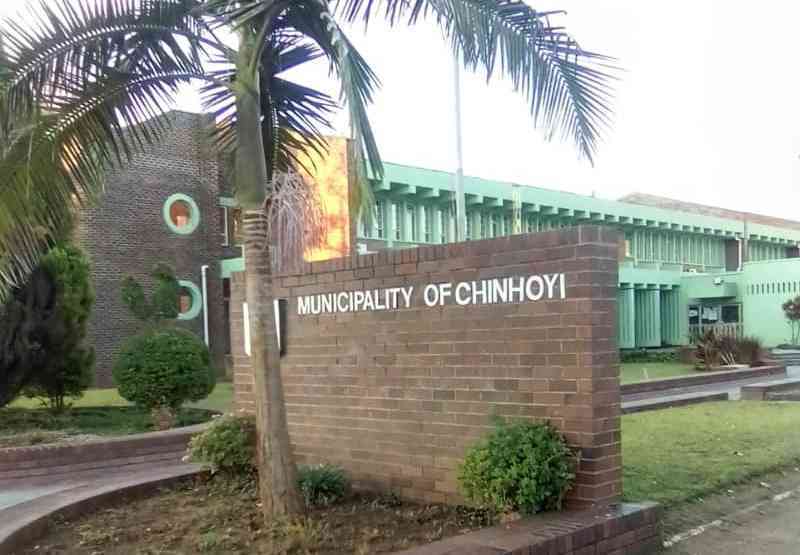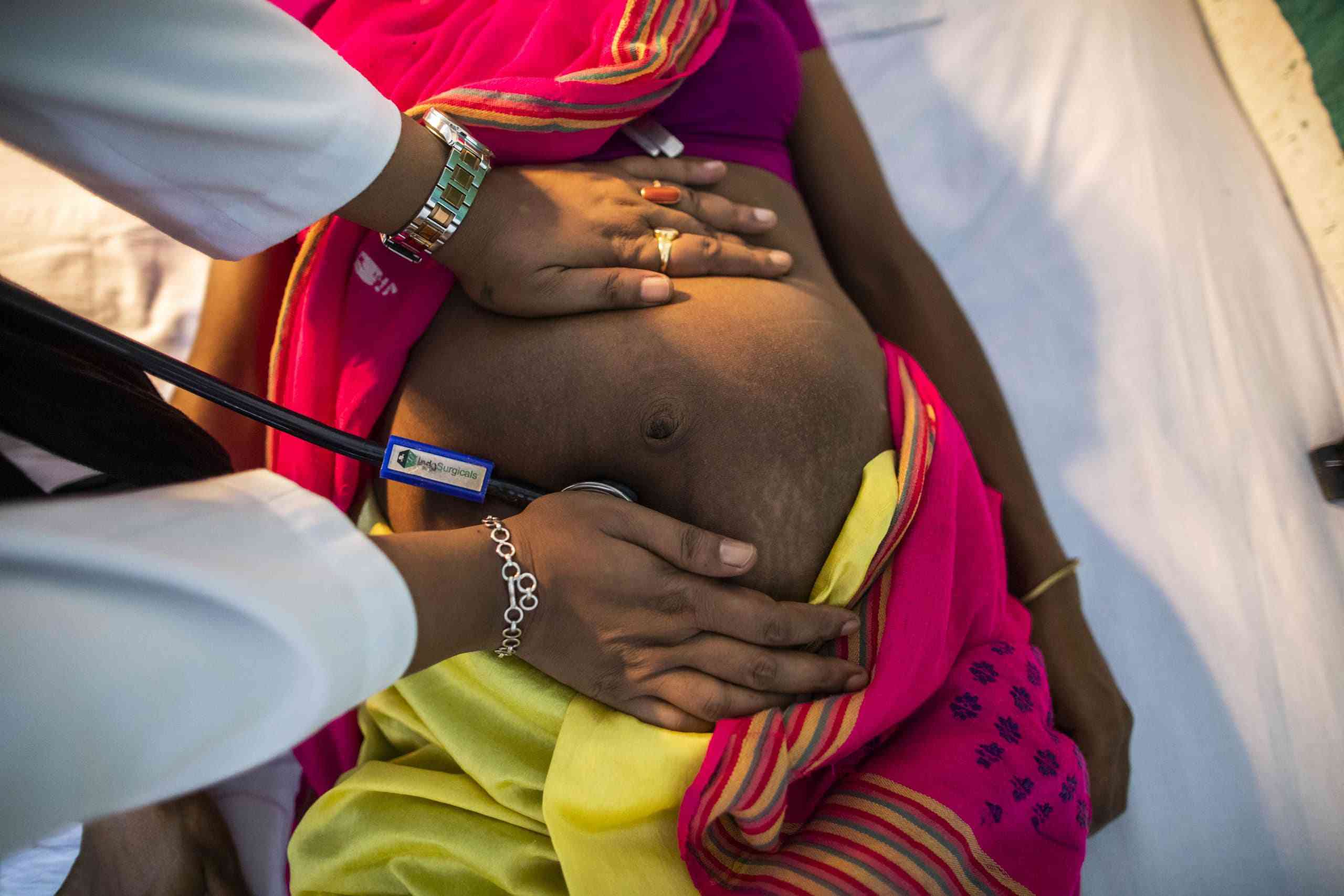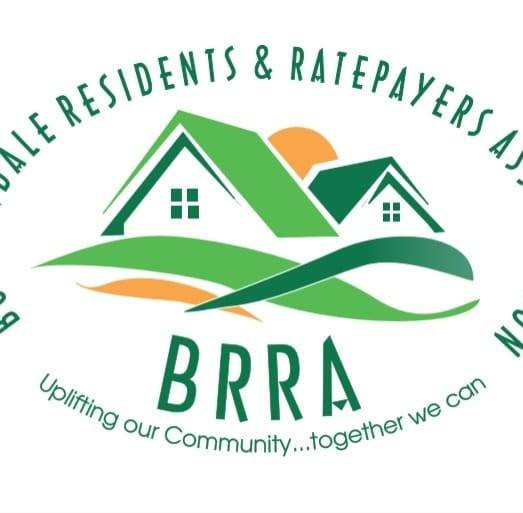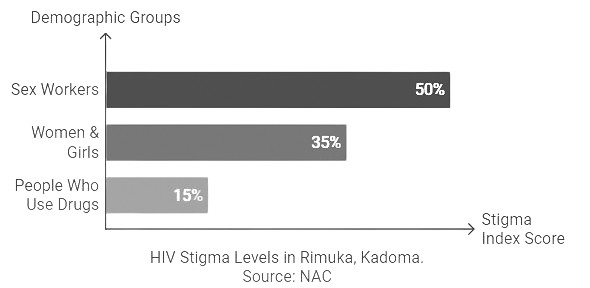
AT 37, Tecla* reflects on her decade-long struggle as a sex worker in Kadoma, where the allure of gold is overshadowed by the persistent threat of HIV.
A resident of Rimuka, Kadoma’s oldest suburb, Tecla frequents a former hotel turned into an entertainment hub that has become one of her “hunting grounds”.
Like many others in this gold mining city, Tecla has faced significant challenges in accessing sexual and reproductive health services due to pervasive stigma and discrimination against sex workers.
Stigma, the elephant in the room
Her community is characterised by stigma, discrimination and marginalisation of key populations, which has over the years created barriers to accessing sexual and reproductive health services.
“When I joined sex work, it was not easy for me to go to the hospital and get services like other women in the community,” Tecla says.
“We would visit the local clinic in the middle of the night or go to clinics outside Kadoma where we were not known.”
Tariro, a 32-year-old sex worker from Patchway Mine, 30 kilometres outside Kadoma, is being treated like an outcast by her community from the time she disclosed her HIV status a decade ago.
- Figtree earmarked for smart city status
- Environmentalist hails BCC new parking system
- Miss Ecotourism on anti-drug abuse campaign
- Letters: Govt must introduce social safety nets for unpaid care givers
Keep Reading
“Many people feel uncomfortable around me these days because I disclosed my HIV status,” she said.
“We live in a small mining compound, but I have become an outsider.”
Tariro says the attitude of people towards her has resulted in her failing to participate in community programmes.
“I used to operate a vegetable business at the market, but last year stopped after I realised that I was the subject of ridicule, gossip and discrimination,” she says.
“Even collecting my HIV medicine from the local clinic, I would do it secretly.”
Zviko, a 23-year-old sex worker from Patchway Mine, bemoaned lack of sexual lubricants.
“We feel discomfort during encounters with men with big organs and we hope the clinics avail this,” she says.
“We cannot allow money to go just because someone has a big organ, we need lubricants to do our work.”
Zviko said she was pushed into sex work by poverty.
Stigma and socio-cultural values have been the leading causes of inadequate sexual and reproductive health education in Kadoma.
This is evidenced by the high prevalence of HIV transmission among key populations. A large chunk of key population is also avoiding healthcare services due to stigma and discrimination.
According to UNAids, over half (55%) of all new HIV infections in 2022 occurred among key populations and their sexual partners, an increase from 44% in 2010.
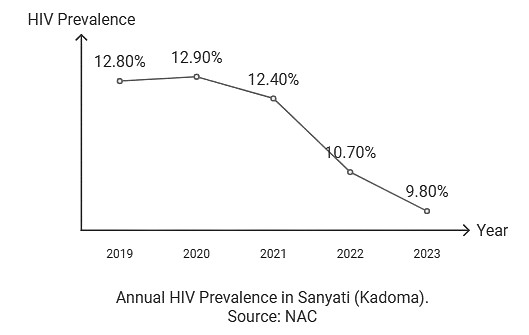
Interventions
To address the situation, the government working with different partners including the United States President’s Emergency Plan for Aids Relief (PEPFAR) has stepped up efforts to meet the 2030 targets of Sustainable Development Goals (SDGs) .
Target 3.3 of the SDGs seeks to end the epidemics of Aids, tuberculosis, malaria and neglected tropical diseases by 2030, highlighting the integral relationship between HIV and Aids eradication efforts and global development objectives.
Meeting SDG targets and achieving positive outcomes in the area of sexual reproductive health requires huge investment and collaboration by all key stakeholders.
Speaking during World Aids Day commemorations in Rusape on December 1, US ambassador to Zimbabwe Pamela Tremont emphasised her country's support to Zimbabwe towards ending Aids by 2030.
"While our progress is impressive, our journey is not over,” she said.
“We cannot go backwards. Let's work together to sustain the gains and accelerate the response, to close gaps and end the epidemic for all groups of people living with HIV."
This year also marks the 10th anniversary of the United States government supported DREAMS initiative that empowers adolescent girls and young women aged 10-24 to be Determined, Resilient, Empowered, Aids-free, Mentored and Safe (DREAMS).
More than one million girls and young women have benefited from the DREAMS initiative's education and entrepreneurship programmes.
Tremont said since 2020, the United States government had invested over US$1 billion to fight HIV and Aids in Zimbabwe.
This year alone, the US government provided US$200 million in Zimbabwe to continue support to communities in 44 of Zimbabwe's 63 districts, she said.
More than US$83 million of the US$200 million was invested in human resources for health annually, supporting 22 000 Zimbabwean healthcare workers. An additional US$40 million provides life-saving antiretroviral medicines to treat the more than 1,2 million Zimbabweans living with HIV.
In Kadoma, PEPFAR is supporting intervention programmes that help to reduce HIV acquisition and transmission among female, male and transgender sex workers.
Tecla is one of the beneficiaries of the programme. She attests to the transformative effect of the intervention.
“We no longer have problems, we have our own clinic here in Kadoma where we access sexual and reproductive health services,” Tecla says.
“The facility is at the hospital, it’s for us and there is no stigma and discrimination.”
This reporter saw several sex workers accessing different sexual and reproductive health services during a recent visit to the facility, run by the Centre for Sexual Health and HIV/Aids Research (CeSHHAR
*Not her real name.
“STIs are treated, but above all we access HIV testing and counselling,” Tecla says.
“We also get awareness programmes and are encouraged to use condoms.”
CeSHHAR Zimbabwe specialises in sexual and reproductive health, HIV and Aids research in the country in collaboration with the Health ministry and National Aids Council.
The organisation is implementing a national sex work programme aimed at reducing HIV acquisition and transmission among female, male and transgender sex workers with support from PEPFAR through USAid.
“Low consistent condom use, risk of drug use and increasing transactional sex are some of the common reasons that put key populations at risk of acquiring STI and HIV infections,” says CeSHHAR outreach officer for Kadoma, Audrey Chikeya.
“Therefore, we are reaching out to these populations by increasing awareness and access to STI and HIV prevention, testing and treatment services, which are fundamental to reducing transmission of STI and HIV infections.”
Chikeya says there has been a remarkable uptake of female condoms over the years, thanks to the introduction of flavoured ones.
“With female condoms, we have seen an increase in uptake because when we started, female condoms were not very popular with the sex workers,” she says.
“They are now flavoured with strawberry, vanilla and all.
“We have attributed that to the different flavours that come with female condoms, which then attract more partners for the sex workers.
“They say it’s more marketable and sometimes their partners feel like they don’t need to wear condoms, but if it’s the women wearing one, then it's fine.”
CeSHHAR has embarked on a number of education awareness programmes that are targeted at sex workers.
“We don’t just distribute these condoms, but we make sure we raise awareness through sexual health education,” Chikeya says.
“Most of our clients are female sex workers, but we have male sex workers who also come for services.
“We screen them for sexually transmitted infections and treat them; we also do condom education and other HIV services for free to sex workers in communities outside Kadoma.”
2024 Condom distribution in Kadoma, Midlands. Source: NAC
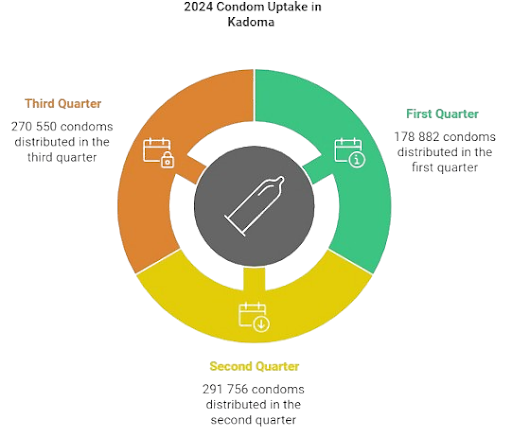
The success story
Chikeya says since 2021, about 5 000 male and female sex workers from Kadoma and surrounding communities have benefited from CeSHHAR’s condom use promotion, free HIV testing and treatment, STI screening and treatment programmes.
The HIV prevalence for Kadoma is 9,9% representing a reduction from 14,10% recorded in 2014. However, the prevalence is higher than the national one, which is 11%.
According to the World Health Organisation, prevalence measures the frequency of an existing disease in a defined population at a specific time.
“Yes, there are indications of impact, reduction in prevalence, increased information on HIV and sexual and reproductive health rights within communities, improved service provision by Aids service organisations and rural clinics, early detection of cervical cancer and treatment,” says Sanyati district aids co-ordinator Amnot Chipandambira.
PEPFAR communications specialist Gay Nyakwende said the HIV situation underscored the critical need for comprehensive HIV and Aids prevention and care services, which PEPFAR had been instrumental in providing.
“PEPFAR’s impact in Kadoma extends beyond merely providing resources; it has catalysed a significant shift in the approach to HIV and Aids prevention and treatment,” she says.
“By offering a range of services that encompass HIV and Aids prevention resources, sexual and reproductive healthcare and more, the programme has addressed the multifaceted challenges faced by the community.”
Public health expert and medical doctor Johannes Marisa said factors such as stigma and discrimination could act as obstacles to key and vulnerable populations from accessing health services.
“The idea of having these facilities for key populations is plausible as they are non-judgemental and non-discriminatory,” he says.
“There is a need to scale up key population friendly clinics so that they access the necessary sexual and reproductive health services.
“Apart from the clinics, there is a need to scale up awareness campaigns to curb stigma and discrimination.”
Kadoma mayor Nigel Ruzario conceded that HIV has had ripple effects on the city’s socio-economic facet.
“I would say, gold mining has brought significant growth to our city, but it also has its bad side,” he says.
“There are lots of dirty things happening at night and there is a lot of sex work happening in Kadoma.
“We have our sisters who came to the town pushed by poverty and we have our brothers toiling all day foraging for gold and the rest is history.
“Yes, I would say to some point, HIV has affected the socio-economic side of our city.”
The closure of a number of mines has left a significant part of the mining community of Kadoma poverty stricken.
Once a vibrant mining town, Kadoma is now a pale shadow of its former self with many people relying on artisanal mining, vending and sex work, among other lower-wage jobs.
Development expert Takemore Mazuruse said poverty was the major driving force behind women resorting to selling sex.
“Most of these women are into sex work because of poverty and the majority lack financial resources to start income-generation projects,” he said.
“For long-term solutions there is a need to address issues around poverty if we are to curb sex work and in the short term we need to empower these women by availing necessary sexual and reproductive health services.
“There is also a need to engage them, raise awareness on condom use and encourage them to go for HIV testing and counselling.”
Ernest Chikwati, Aids Healthcare Foundation country programmes manager said condoms went a long way in reducing new HIV infections and saving lives.
He said his organisation was implementing programmes aimed at supporting the national health strategy through various aspects of HIV and Aids prevention, treatment, care and community services.
Stakeholders said the PEPFAR programme had been instrumental in reducing new HIV infections, including in Kadoma. Key populations such as sex workers have benefited a lot from the programme.



